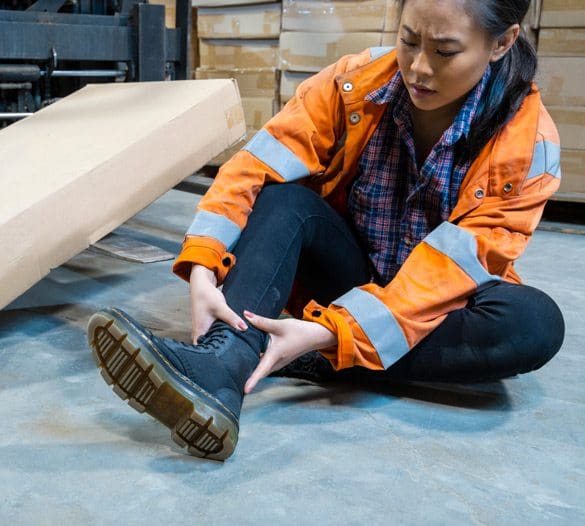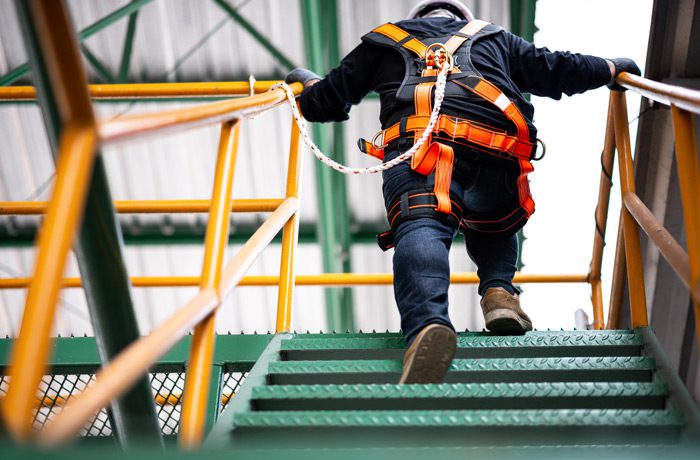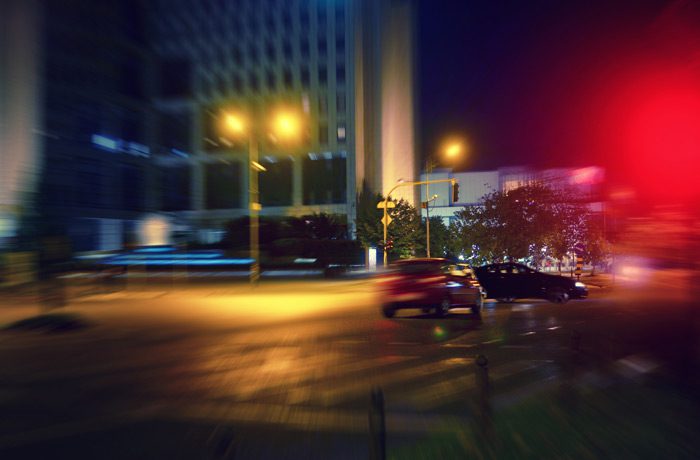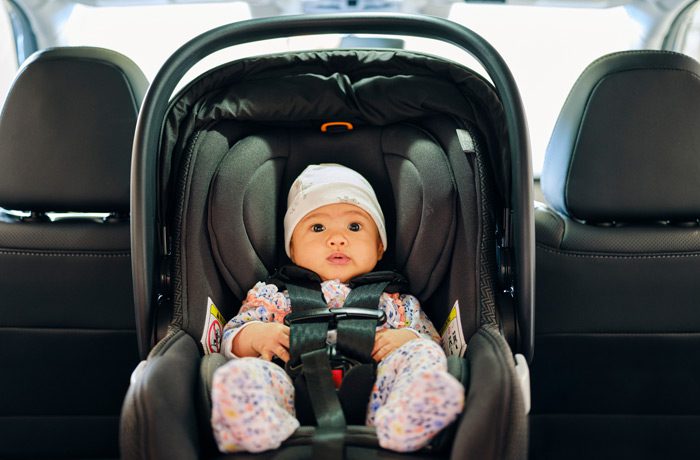Slips, trips, and falls are a common occurrence in the workplace, leading to injuries ranging from scratches and bruises to broken bones and dislocated joints.
Other injuries caused by slips, trips, and falls include:
- Fractures
- Shoulder dislocation
- Knee injury
- Sprains
- Superficial cuts
- Lacerations
- Open wounds
- Burns
- Scalds
- Traumatic brain injury
- Spinal cord damage

Causes of Slips
Slips can be caused by a variety of things, such as:
- Wet floors
- Polished or glossy floors
- Dusty floors
- Loose mats and floor coverings
- Unsuitable footwear
- Icy conditions
Spilled water, drinks, and leaks can increase the risk of falls for workers and visitors. Recently mopped floors and lack of warning signs can also pose a serious risk.
Dusty floors can make it difficult for shoes to grip the floor and lead to slips. Poorly secured mats or rugs can easily slide underneath a worker or visitor and lead to an unexpected slip.
Shoes with slippery soles, even if the floor is dry, are a slip hazard.
Causes of Trips
Trip hazards can include:
- Materials, tools, or equipment lying in walkways or unexpected places
- Loose flooring, such as a loose floorboard or rug curled up at the corner
- Uneven surfaces, such as potholes and cracked slabs
- Trailing or unsecured cables
- Obstructions like low walls or a low curb
- Unexpected step
- Open floor mounted socket covers
- Poor housekeeping
- Bad lighting
Regular cleaning and maintenance can help reduce the risk of trips caused by objects lying on the floor or loose cables.
Causes of Falls
The following risk factors increase the likelihood of falls in the workplace:
- Slippery, cluttered, or unstable walking/working surfaces
- Unprotected edges
- Potholes and wall openings
- Poorly positioned ladders
- Misused fall protection
- Poorly marked and/or poorly lit walkway transitions
The risk of falls is especially high among workers in:
- Healthcare support
- Building cleaning and maintenance
- Transportation and material moving
- Construction and extraction

Tips To Prevent Slips, Trips, And Falls
- If you notice something you might slip or trip on, tell your manager as soon as possible.
- Clean up spills and anything slippery right away. Ask your supervisor how to use cleaning products.
- Avoid using cleaners that could make the floor slippery.
- Clear walkways, stairs, and lobbies of objects that might be a tripping hazard, such as cords, wires, and empty boxes.
- Ensure floor mats are laid flat rather than wrinkled or bunched.
- Use handrails when walking up and down steps.
- Make sure a ladder or stepladder opens fully before opening and using it.
- Ensure ladder extensions are fully locked and that the ladder legs are stable on a flat, non-slippery surface before climbing it.
- Wipe away slippery material on the rungs, steps, or feet of a ladder before using it.
- Never exceed the load limit noted on the ladder.
- Design entrances and walkways to accommodate expected foot traffic through the business.
- Conduct periodic inspections of the premises for safety.
- Investigate incidents in a timely manner and document findings.
Workers who have been injured in the workplace should seek medical attention and report the incident as soon as possible. In some cases, they may have a personal injury case. Call Rafii Law to find out if you’re eligible for compensation.





